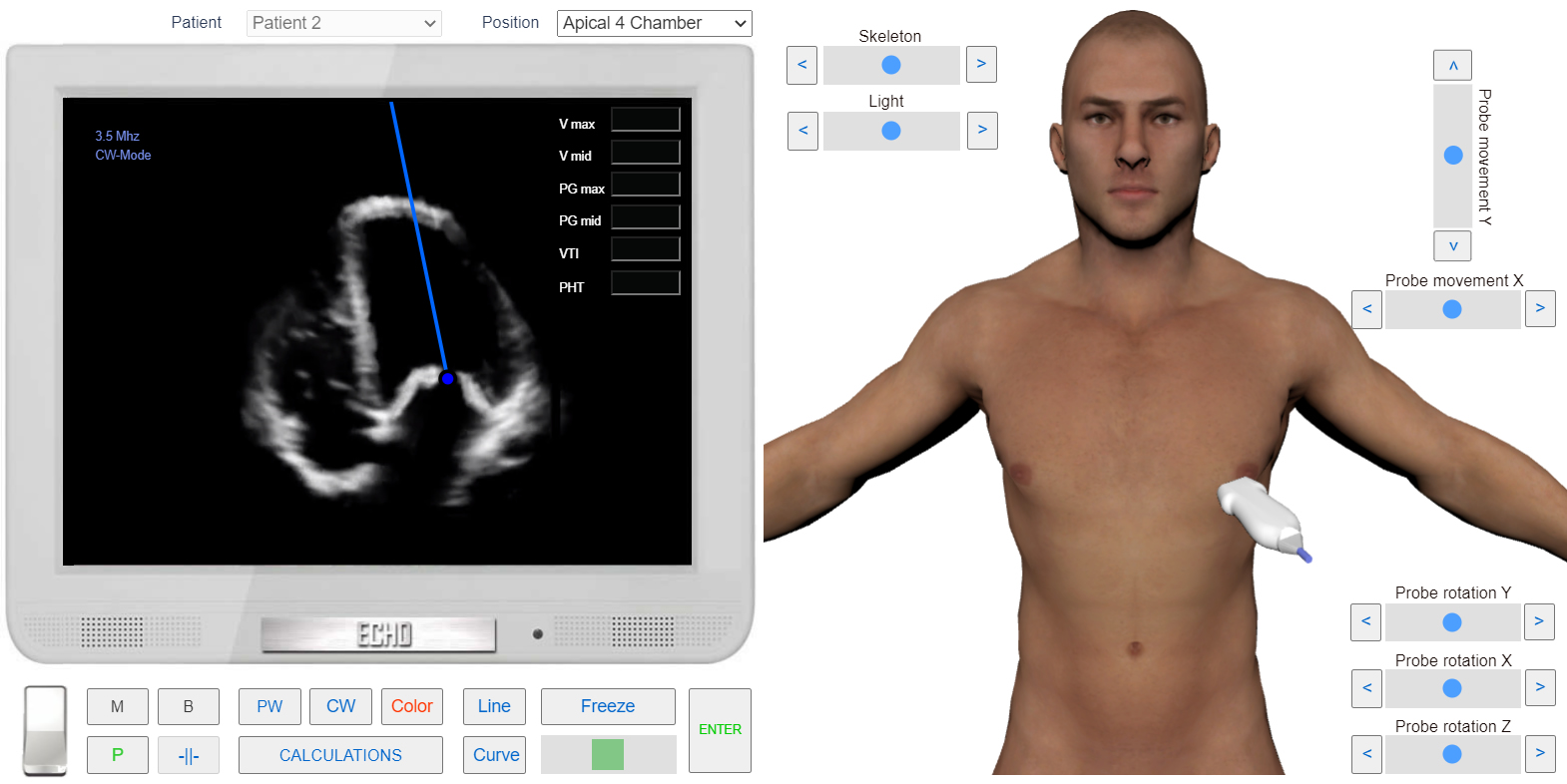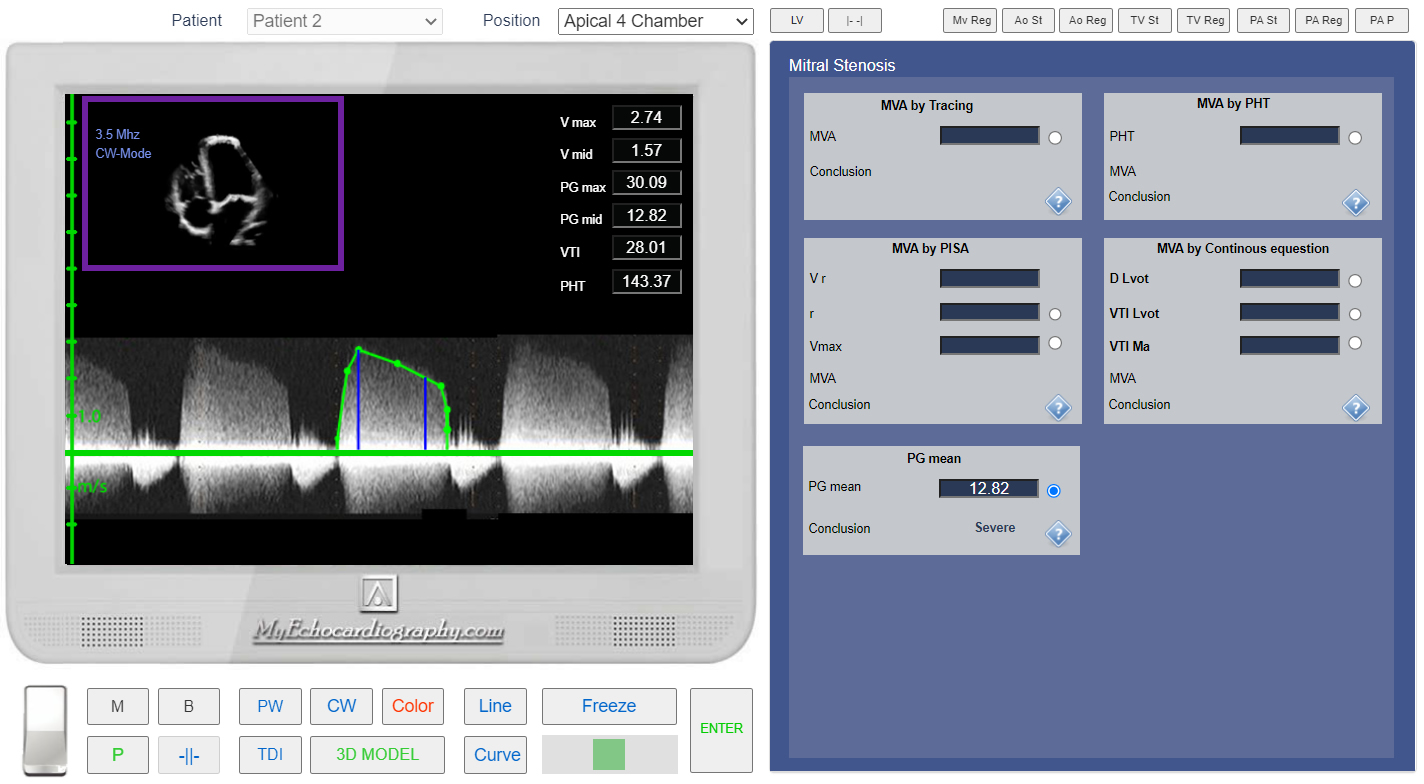degree of Mitral stenosis by Mean and max pressure gradient
Echocardiography Textbook
For mitral stenosis assessment, it is necessary to measure the pressure difference between the left atrium and the ventricle (in the apical four - chamber position).
Both maximum and mean pressure gradients can be measured.
PGmax - Maximum flow gradient, measured at the maximum point of velocity.
PGmid - (Mean Gradient) - The sum of the gradients measured every 2 seconds, divided by the number of measurements.
For PGmax calculation we need the maximum flow rate at point E. Using the Bernoulli formula ultrasound device will calculate the maximum pressure gradient:
![]()
V - maximum flow rate.
For the mean pressure gradient (PGmid) we need to trace the spectrogram of the transmitral diastolic flow. Ultrasound device will calculate the mean pressure gradient
Mean gradient is the relevant haemodynamic finding. Maximal gradient is of little interest as it derives from peak mitral velocity, which is influenced by left atrial compliance and LV diastolic function.
Assessment of mitral stenosis by the mean pressure gradient (PGmid)
- Mild < 5 mmHg
- Moderate 5 - 10 mmHg
- Severe > 10 mmHg

Apical 4 Chamber View. Sample Volume position for examining the transmitral diastolic flow. Simulation By Echocardiography Online Simulator MyEchocardiography.com

Apical 4 Chamber View. CW doppler. Transmitral diastolic flow. Measurement of the Pressure Mean Gradient. Simulation By Echocardiography Online Simulator MyEchocardiography.com
ASE Guideline - Echocardiographic Assessment of Valve Stenosis
How to Simulate Assessment degree of Mitral Stenosis by pressure mean gradient? >>>